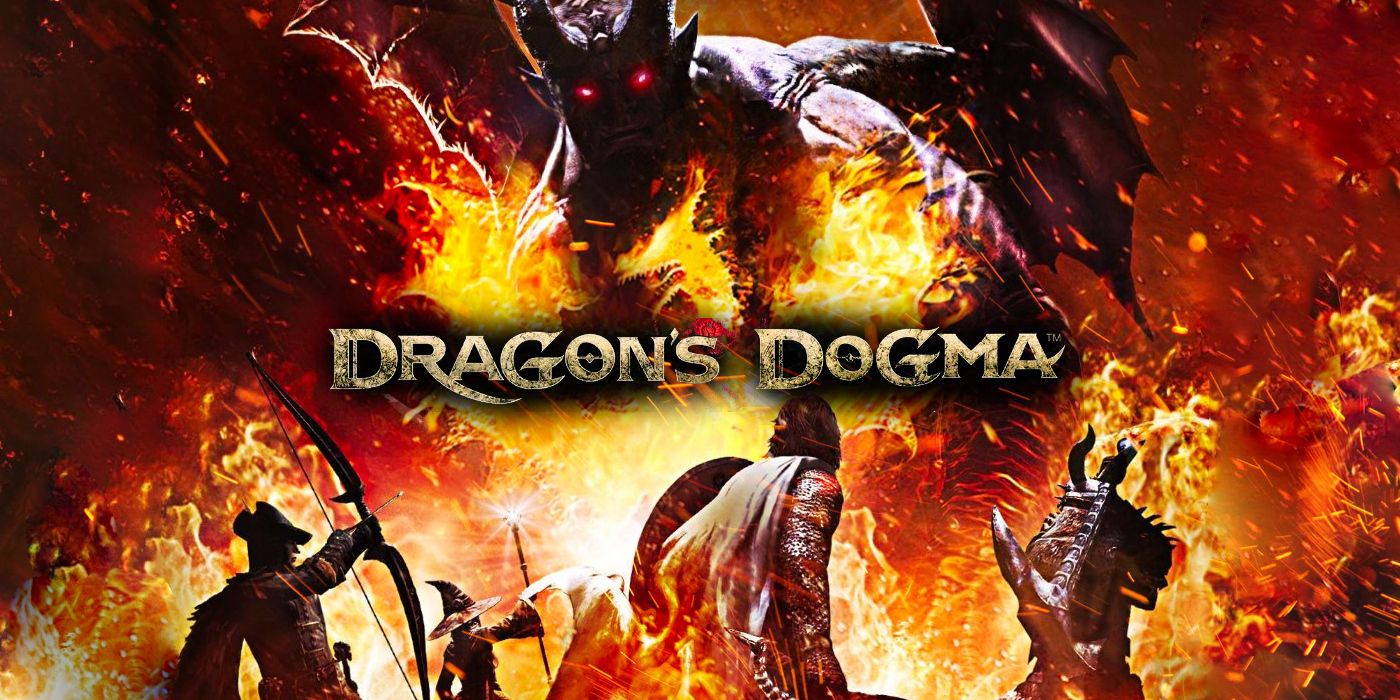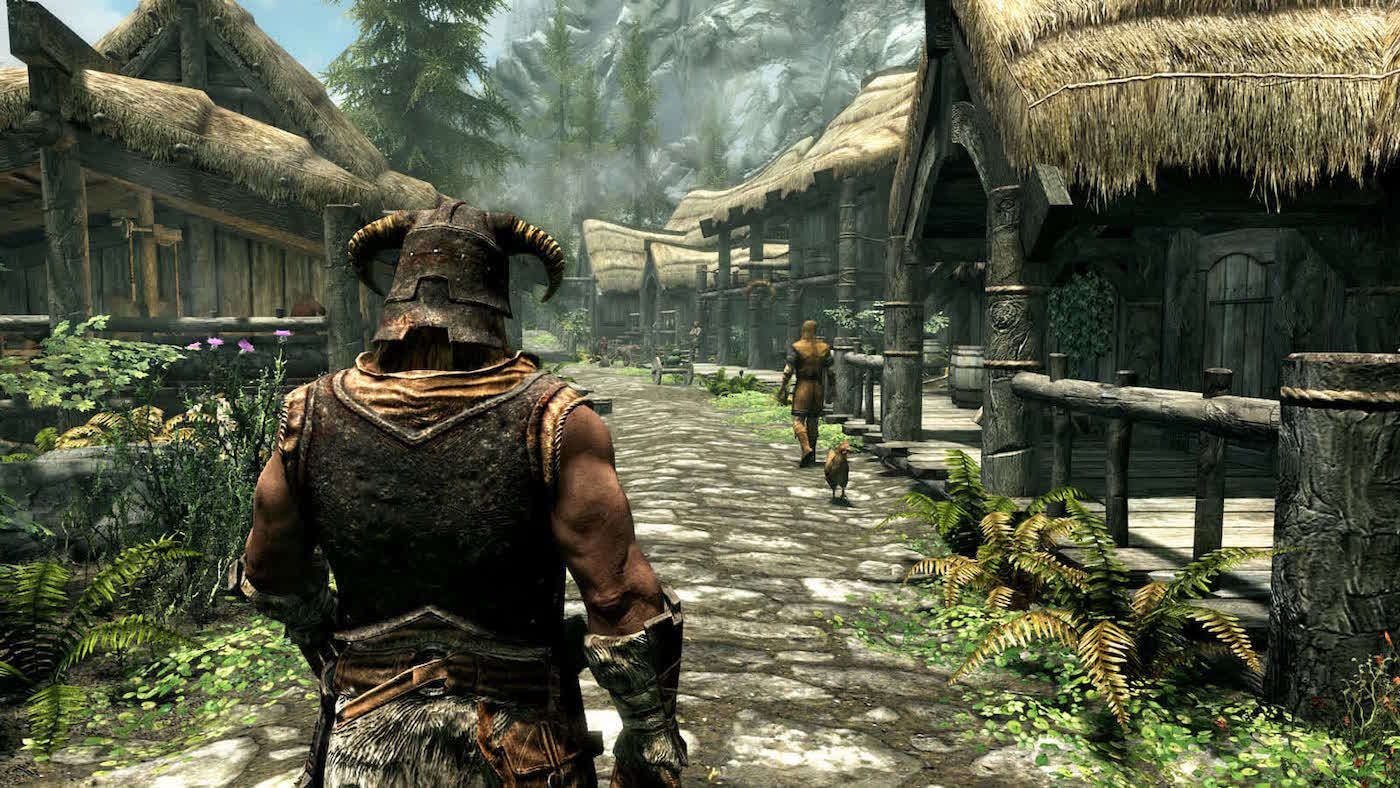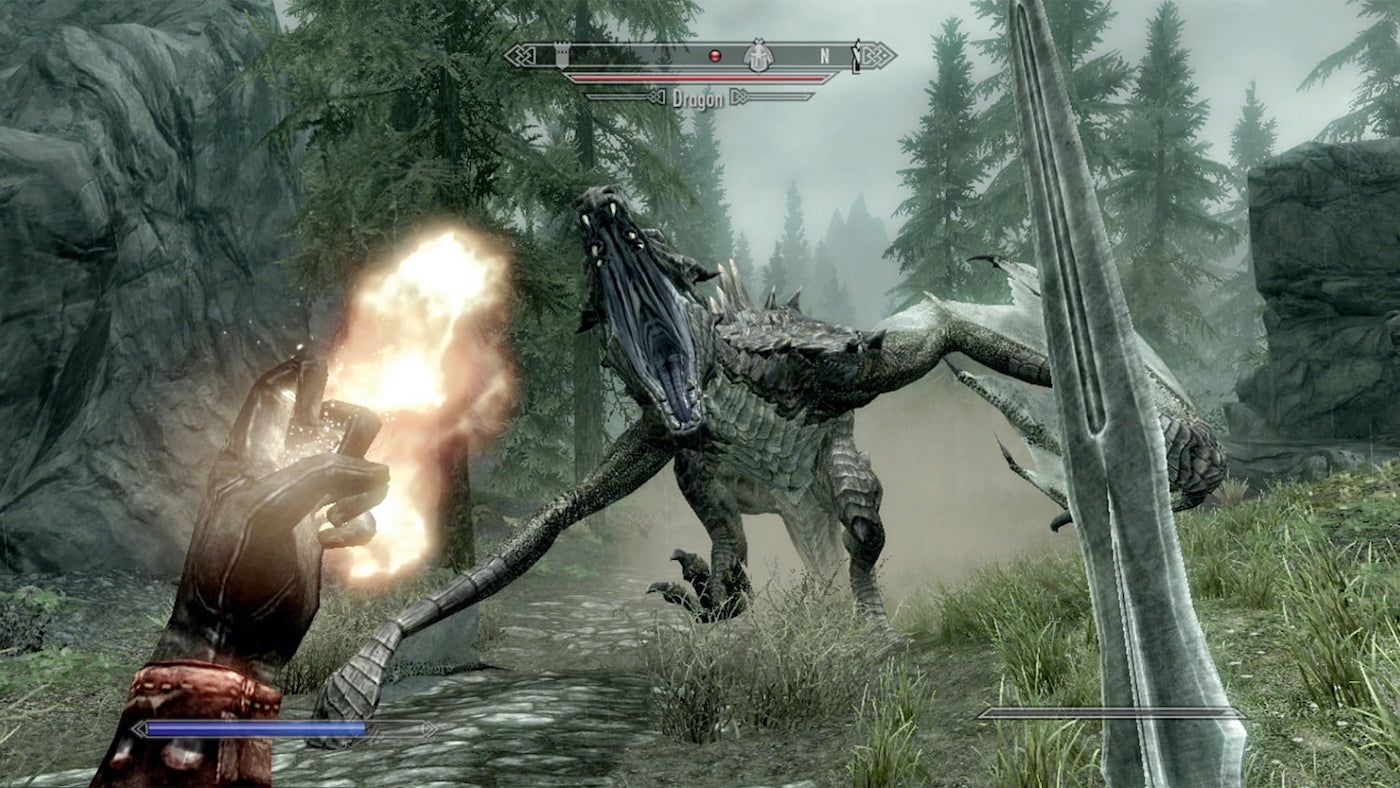The Elder Scrolls V: Skyrim arrived in November, 2011. When it was arrived, it brought with it the barometer on which all open world, medieval fantasy games would be measured. Whether in support of Bethesda’s sprawling epic, or in defiance to it, every game that was released that shared any kind of thematic or mechanic elements was placed under the Skyrim microscope. Even a game as established (and subsequently beloved) as The Witcher 3: Wild Hunt (which came out two years later) was branded by the developers with a “Skyrim in a Game of Thrones sauce” tag.
Six months following Skyrim, Capcom released Dragon’s Dogma —an action, role-playing game that, let’s face it, looked a whole lot like Skyrim on the surface. Medieval fantasy world? Check. Dragons? Check. Hero infused with power from said dragons? Check. In Skyrim, you are the Dragonborn; in Dragon’s Dogma, you are the Arisen. However, the similarity was 100% intentional, but not because Capcom intended to make a Skyrim clone. Director Hideaki Itsuno, in a March 2012 interview, praised Skyrim’s impact, while expounding Capcom’s hopes for Dragon’s Dogma:
Skyrim has had a big influence on the RPG genre, but we’re trying to do the same thing...At Capcom, we’ve made Dragon’s Dogma and come up to this point through our experience of action games. We’re trying to make a new genre: We’re using our action heritage and putting that into an action RPG.
Devil May Skyrim
Comparisons to the Elder Scrolls notwithstanding, Dragon’s Dogma differed in some important ways. First, it featured much deeper combat mechanics than Skyrim, allowing for development through “vocations” (character classes). The combat was more action-oriented, a byproduct of Itsuno’s work on the Devil May Cry series and Capcom’s aforementioned desire to create a new branch of the action-RPG genre. Another difference was the presence of a party. After creating your character (“The Arisen”), you create a “pawn” to join alongside your adventures. The third and fourth members of the player’s party are comprised of other players’ created pawns that appear in a lobby of sorts called “The Rift.” In this way, an overwhelmingly single player experience is given a communal aspect.
However, the most impactful difference isn’t the most immediately noticeable. Where the world of Skyrim is overflowing with cities, villages, dungeons, bandit camps, and all manner of landmarks, Dragon’s Dogma’s world of Gransys is tragically, but importantly, pretty empty. The criticism of this emptiness permeated in reviews, like Jordan Sims of Medium, who says, “Dragon’s Dogma is an empty game. It is a game filled with lots of space and open terrains but has no need or benefit to the exploration.” The reviewer is right, but here a major weakness of the game is actually a driving force for why the game ultimately works.
Quality Over Quantity
The reason I used the word “tragic” to describe the emptiness of Gransys is because the locations that do exist are often spectacular. Places like the Bluemoon Tower, or the primary city of Gran Soren, both give the overwhelming indication that the design team had a strong grasp on what makes settings in these sorts of fantasy worlds pop. Maybe it’s related to the sheer size of these places, or maybe it is the actual nuts and bolts of their design, but the presence they create is off the charts. Speaking at the 2013 Game Developers Conference (GDC), Itsuno said that "there was no way to create this game within the budget," and that during development, Dragon’s Dogma was fifty percent larger than the final shipped game. While that likely indicates more locations were planned, in its current state, it would probably have involved scaling back on the places that made the cut. I'm glad that didn't happen.
What A Horrible Night to Have A Curse
For much of the game, the world of Gransys is extremely dangerous. To that end, the day-night mechanic that Capcom used for Dragon’s Dogma, and how it works in tandem with the lack of settlements, is one of my all-time favorites. It is fairly straightforward, but is simply what so many gamers ask for from their night travels: It’s really freaking dark. In these grand fantasy worlds, there’s nothing more intoxicating than the feeling of impending adventure. When a game forces the player to prepare for that adventure in some survivalist sort of way, as opposed to many games whose concept of night is darkness with a Ralph Wiggum nightlight, the immersion reaches new heights. Not only are enemies significantly more difficult at night in Dragon's Dogma, you literally cannot see out in the wilderness unless you’re carrying torches, or spells that emit light. While this mechanic would be great no matter the density of settlements, there are so few places of respite around Gransys. Players have to be cognizant of the time, as getting caught in the wilderness at night, for a good portion of the game, is almost a death sentence.
Into the Wild
The aforementioned danger of Gransys extends beyond the overnight hours. Though Dragon’s Dogma may be short on locations of interest, it is not short on unexpected level spikes just around a seemingly innocuous bend. A leisurely stroll of killing goblins can quickly become a dire fight for your life when you accidentally wander too close to a chimera lounging in the forest. There is no doubt that these level spikes are frustrating at times, but how it mirrors the spirit of wilderness adventure is hard to ignore. And with the world so empty of safe havens in which to run, that emptiness defines how exploration unfolds. Given how central exploration is to the spirit of all open world fantasy games, anything that dictates how that aspect of the game is handled is as crucial as any other design choice.
Whether we are talking about Skyrim, Dragon’s Dogma, or any other game in the genre, the world building that goes on is central to their success. Dragon’s Dogma, indicated by its sharp size drop during development, didn’t have the same resources Bethesda was working with for Skyrim. But in an almost-paradoxical way, Capcom was able to define the world of Dragon’s Dogma by its vast emptiness, an emptiness worth exploring for no other reason than the hope that maybe there was one more magnificent castle just over that distant horizon.



